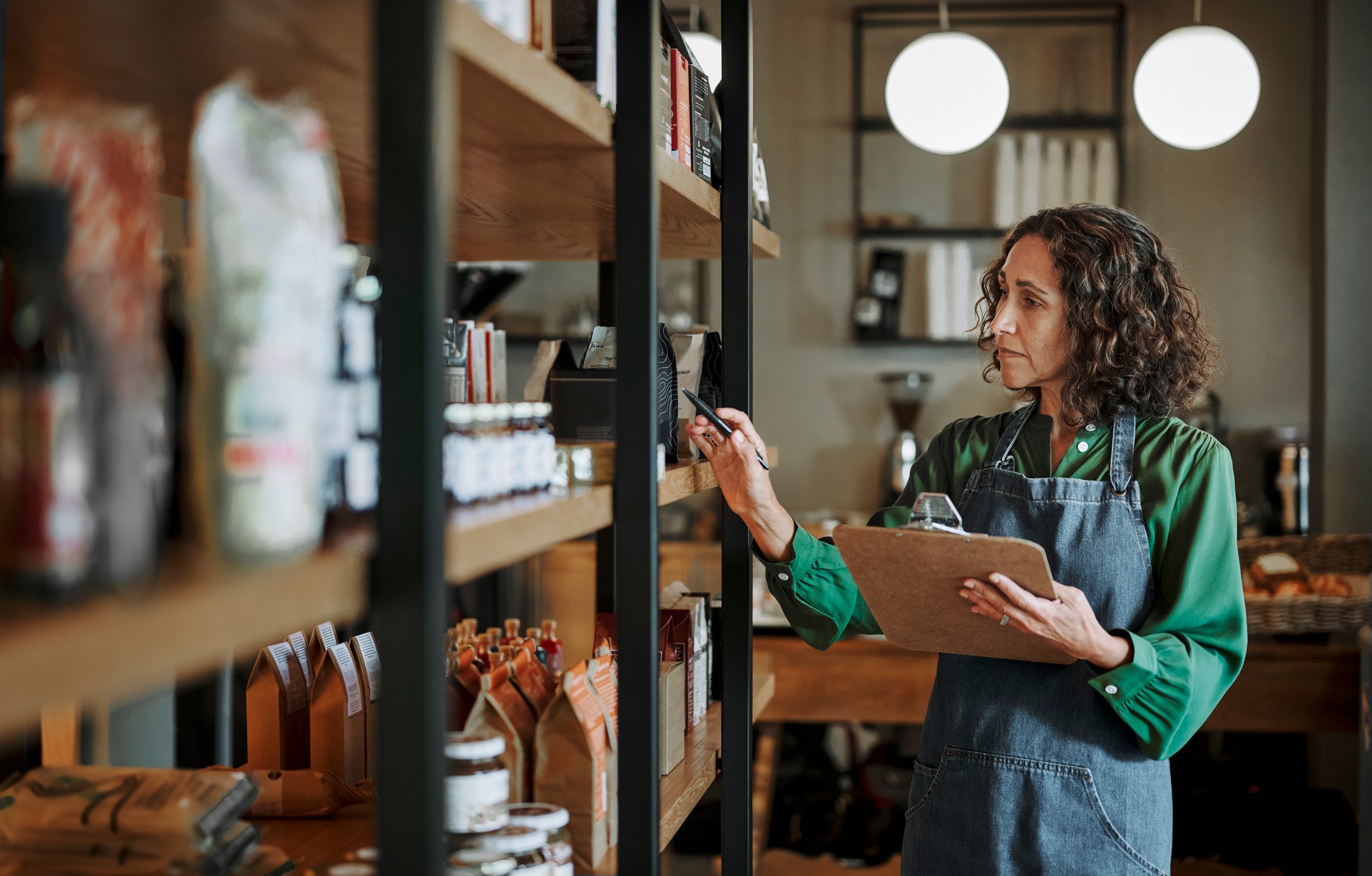Did you know cafes and coffee shops are the fastest growing segment in the food service industry? Americans are drinking more coffee than ever.1
Of course, you already know that if you’ve spent anytime on Instagram browsing through a feed of latte art.
If you want to open a cafe, you need a plan. Here’s your step-by-step checklist to build the perfect blend, err… we mean, cafe!
1. Research, research, research.
Trust us; this part is more fun than it sounds. Sure, you’ll be taking lots of notes but you’ll get to test lots of coffee and pastries in the process.
As you visit cafes in your area, ask yourself the following questions:
- How many cafes are there? Are they mostly big chains or mom-and-pop shops?
- Which menu items seem to be most popular?
- Where do they source their coffee beans?
Pay special attention to how the coffee tastes. Your beans will be the bread and butter of your cafe. Research the price, location, and fair trade practices of any roasters you’re considering.
2. Craft your cafe concept.
Your cafe concept is just a fancy way of saying the theme, vibe, or overall feel of your cafe. It’s never too early to start dreaming up your cafe name, menu, and decor.
To nail down your concept, think about the following:
- Who will your customers be? Do you want to serve coffee aficionados, Instagram foodies, or commuters? A little bit of everyone will trickle in, but your core customer will help you define your ideal location, pricing, menu offerings, and decor.
- How will you price your coffee? Do you envision your cafe as a fancy $7 matcha latte joint, or a place where anyone can get a decent cup of joe for a decent price?
- Will you serve food as well? Consider where you’ll source your pastries and food items, or if you want to prepare them in-house. You can also serve snacks and beverages to-go.
- What kind of atmosphere do you want to create? Do you want to encourage networking and community connection, or will you be a quiet haven for the remote-work crowd?
3. Draft a business plan.
Now that you’ve gathered all your research, it’s time to formulate your thoughts into something a bit more official: your cafe business plan.
Your business plan is an important step of starting any business. It helps you finalize your vision, and work out the details of what you need to do to make it happen. Plus, if you decide to get funding for your cafe, your investors will expect to see a business plan. Here’s what to include.
- Executive summary
- Company description
- Market analysis
- Organizational structure and management
- Product or service explanation
- Marketing and sales strategy
- Financial plan and projections
There’s more than we can get into in this post, so be sure to check out our guide to writing a business plan.
4. Calculate your budget.
Many people open their cafe with a low budget. Start by determining what finances you yourself can put into opening your cafe. Then, figure out how to get additional funding from:
- Family and friends
- SBA loans
- Small business grants
- Business line of credit
- Equipment financing
Remember, it can take up to a year for a new business to be profitable. Your startup costs should cover not only everything you need to get started, but enough to cover your operating costs for twelve months as well.
5. Find a space for your cafe.
During the research stage, you likely honed in on one or two areas of town that felt like a good fit for your cafe. Start looking for commercial space to rent in those areas.
Before you rush to sign a lease, however, take a moment to really think through whether this space will be a good fit for you, and for your customers.
For you, consider whether your staff will have sufficient room to work behind the counter. Are all the gas and water lines already installed? Is the location a reasonable distance from your suppliers? Does it have good visibility from the street? Finally, confirm that you won’t be next door to any competitors.
For your customers, you want a space that’s easy for them to access, whether that means there’s plenty of street parking or it’s on a busy downtown corner where everyone walks anyway. If you plan to have seating, consider how much space the front-of-house area affords. What is the crime rate in the area? Do your target customers live or work closeby?
If possible, work with a lawyer to help you make sure you’ll be on the right side of local zoning regulations.
6. Secure all the necessary permits and licenses.
Any new business requires a certain set of permits and licenses to open, and food businesses are under even more scrutiny. Work with your city government or small business administration to ensure you have all the required permits and licenses for your cafe.
These may include:
- Business license
- Seller’s permit
- Food service license
- Building health permit
- Certificate of occupancy
- Passed health & safety inspections
Pro Tip: It takes time for paperwork to go through the approval process, so start this process as soon as you can.
7. Get insured.
Most small businesses require at least four main types of insurance coverage. These include:
- General liability insurance. General liability insurance protects your cafe from liability caused by accidents, to your customers, their property, or other parties.
- Professional liability insurance. Also known as errors & omissions insurance, professional liability insurance protects you from the financial consequences of claims that your mistakes or negligence caused financial or personal damage to a third party.
- Business equipment protection. While general liability insurance protects you from liability costs when other people’s property gets damaged, Business Equipment Protection provides coverage for your equipment.
- Workers’ compensation. If you’re hiring staff, as most cafes do, you’ll need workers’ comp. This coverage is required in nearly every state, and provides benefits to your employees should they get injured during the course of their work.
8. Design your cafe layout.
Ready to bring your cafe to life? Here’s how to design a brew-tiful layout.
For back-of-house, your number one goal is order flow. You’ll need stations to take, prepare, and serve orders, and then a spot for cleanup. If you’ll be preparing food as well, consider how that works into your flow.
For front-of-house, let your cafe concept be your guide. The way you furnish and decorate your space, including the materials and color choices, will instantly communicate to people the vibe of your cafe. Get creative with your table and chair choices so you can maximize seating while still ensuring your customers’ comfort.
9. Order cafe equipment.
You already know you need a primo espresso machine and some mugs, but what else do you need? Here’s a list the basic equipment any cafe needs to open:
- Espresso machine
- Coffee grinders and brewers
- Frothing pitchers and thermometers
- Airpots
- Hot water dispenser
- Refrigerator
- Ice machine
- Display case for pastries and snacks
- Espresso cups and coffee mugs
- Additional dishware for dine-in
- Cup, lid, and straw organizers (and cups, lids, and straws)
- Condiments (sugar packets, stirrers, etc.)
- Three-compartment sink
- Dishwasher
- Aprons
- Point-of-sale (POS) system
10. Hire your staff.
Opening day is nearly here! You just need one more key ingredient: smiling and knowledgeable staff to serve your customers and wow them with their latte art. When hiring cafe staff, consider whether you want experienced baristas, or if you’re comfortable training novices in the art of coffee making.
Many customers will ask for recommendations when placing their order, so it’s good to bring your staff up to speed on the beans, flavor profiles, and appeal of different items of your menu.
Open your cafe!
You’re officially ready to open the doors and start brewing your coffee! As a reminder, here’s your opening a cafe checklist:
- Research, research, research.
- Craft your cafe concept.
- Draft a business plan.
- Calculate your budget.
- Find a space for your cafe.
- Secure all the necessary permits and licenses.
- Get insured (Thimble can help with this part.)
- Design your afe layout
- Order cafe equipment.
- Hire your staff.
We wish you a latte success!
Source:











